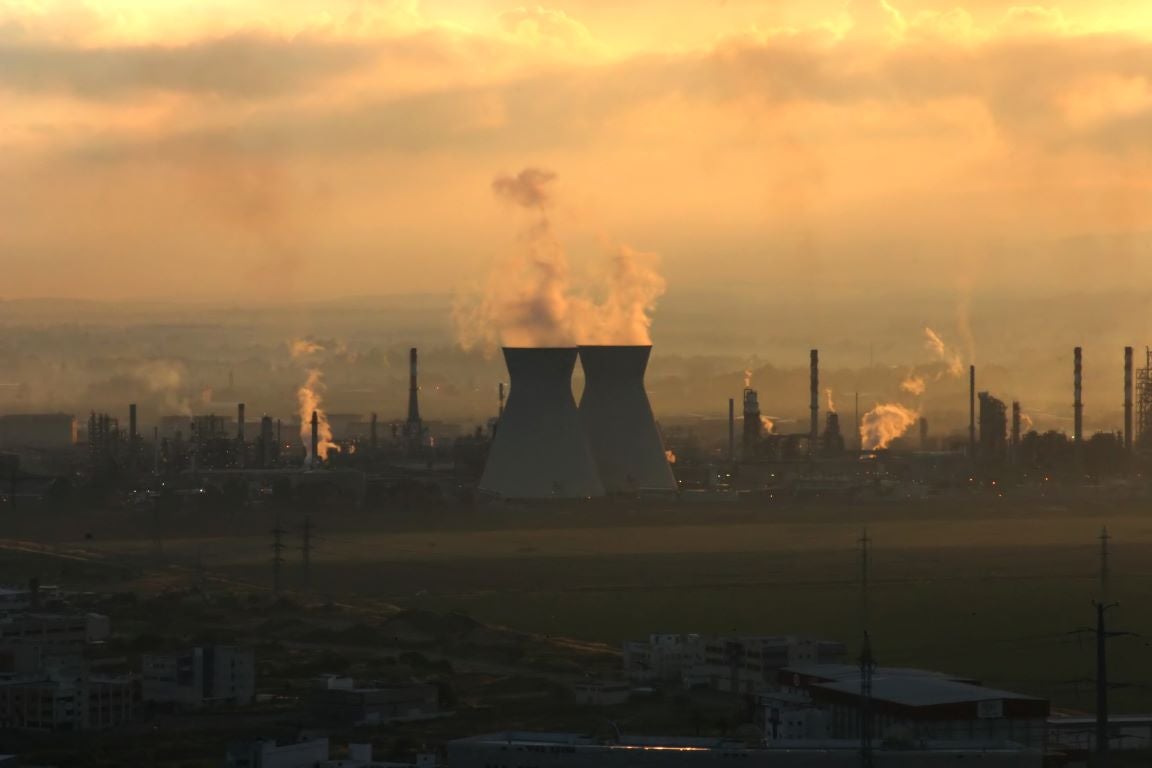
While the global energy market was still readjusting to the supply cuts by Opec+ and the aftermath of the Russian Invasion of Ukraine, an escalation in geopolitical tensions in the Middle East has kept the markets on edge since 7 October.
Palestinian political and military organisation Hamas attacked Israel on 7 October, reigniting years of conflict between Palestine and Israel. Israel has been violently responding to Hamas by bombing the Palestinian Gaza region for over a month now, and the growing casualty toll has kept the commodities market in a state of unease.
With oil prices surging to almost $98 per barrel in mid-September following additional production cuts by Saudi Arabia and Russia, the International Energy Agency (IEA) highlighted the prospect of “higher for longer” interest rates due to fluctuating prices, slowing down economic and demand growth for crude oil in its October issue of the oil report.
“Voluntary cuts are expected to keep the oil market in deficit as Opec+ could pump 1.3 million barrels per day (mb/d) below the call on its crude in 4Q23,” IEA said. Russian oil export revenues rose from $1.8bn (Rbs174.41bn) to $18.8bn in September, the highest since July 2022.
In September, Nigeria and Kazakhstan were the leaders in oil production as world oil output rose 270kb/d to 101.6mbpd. The report also said the overall Opec+ output is set to decline in 2023, as global output driven by non-Opec+ will increase by 1.5mbpd and 1.7mbpd in 2023 and 2024, respectively. Commodity prices are expected to decline 4.1% overall next year, according to the World Bank.
Countries now have a more diverse base of oil exporters and energy resources, including renewables, strengthening their defenses against such oil shocks. To offset the impact of oil shortages on pricing, several governments have established strategic petroleum reserves, created supply coordinating systems, and developed futures markets, the Bank said. These advancements imply that war escalation may have more modest consequences than in the past.
How well do you really know your competitors?
Access the most comprehensive Company Profiles on the market, powered by GlobalData. Save hours of research. Gain competitive edge.

Thank you!
Your download email will arrive shortly
Not ready to buy yet? Download a free sample
We are confident about the unique quality of our Company Profiles. However, we want you to make the most beneficial decision for your business, so we offer a free sample that you can download by submitting the below form
By GlobalDataImpact of war on oil prices
The IEA said that the current Israel-Palestine war has “not had any direct impact on oil flows” at this point. However, it “spurred traders to price in a $3–$4 per barrel of crude oil risk premium” when the markets opened, stabilising prices since.
According to Offshore Technology, Shell’s share price hit a record high of 2,763 pence on 16 October due to the war, which caused oil prices to spike. On 9 October, shipping and trade sources said the port of Ashkelon and its oil terminal, around 10km from the Gaza Strip, was shut down. Two other ports, Haifa and Ashdod, remained open.
On 30 October, the World Bank warned that the oil prices could reach $150 in 2024 due to the consequences of the war leading to further oil supply disruption. Based on the current price baseline, oil prices are expected to average $84 per barrel in 2023, the Bank said. An escalation of the current conflict could undermine the global oil supply by almost eight million barrels per day.
Ayhan Kose, the World Bank’s deputy chief economist and director of the Prospects Group, said : “Higher oil prices, if sustained, inevitably mean higher food prices. If a severe oil-price shock materialises, it will push up food price inflation that has already been elevated in many developing countries. An escalation of the latest conflict would intensify food insecurity, not only within the region but also across the world.”
However, the Bank said that countries are now better suited to tackle an oil supply shock than they were in 1973, during the Arab-Israeli war, where members of the Opec group imposed an oil embargo against the US in retaliation for its decision to gain leverage in post-war peace negotiations.
GlobalData, the parent company of Offshore Technology, reported that Brent crude oil prices increased by $1.69 or 1.9% per barrel on 18 October. The prices surged by 2% due to a potential disruption in oil supply amid an explosion at the Al Ahli hospital in Gaza, which killed hundreds of people.
Rising Brent crude oil prices in early October, combined with supply fears, deteriorated macroeconomic indicators and showed “signs of demand destruction” in the US. The IEA data showed that US gasoline consumption fell to a two-decade low.
As of 23 October, Brent crude oil was down by $0.84 to $91.32 per barrel, and the West Texas Intermediate equivalent was down by $0.97 to $87.11 per barrel. A week before that, Brent traded between $88.88 and $93.48 per barrel and on 19 October, it reached the highest since 29 September due to fears of curtailed supplies due to the ongoing war.
Gas flows and prices
Liquified natural gas (LNG) spot prices have increased by more than 40% to $18.345 per one million British thermal units (/MMBtu) since 7 October.
According to reports, geopolitical concerns have filtered through the oil and gas markets. Since the attacks in the Middle East, some LNG buyers in North Asia have paused plans to acquire additional fuel for winter, risking supply and boosting global prices.
On 9 October, the Israeli Energy Ministry shut down gas production in its Tamar platform, operated by Chevron, due to attacks from both sides, limiting supplies from the region. The Tamas gas field produced 10.25 billion cubic metres in 2022, most of which were used domestically, with 15% exported to Egypt and Jordan.
According to think-tank Bruegel, this is not the first time the Tamas platform has been shut down over security concerns.
Chevron halted natural gas exports via the East Mediterranean Gas pipeline between Israel and Egypt, and the company said it would supply gas to Jordan via an alternative pipeline.
Gas supplies to Egypt rose 60% to 350-400 million cubic feet a day in early November from about 250 million, despite analysts’ estimates that the war would undermine Egypt’s increasing domestic gas needs.
Israel also awarded 12 licenses to six companies, including Eni and BP, to explore natural gas off the Mediterranean coast. Leviathan field, Israel’s largest offshore gas field with an estimated 22 trillion cubic feet of gas, will be used for domestic and export purposes.
“Fraught with uncertainty”
Along with oil supply disruptions and voluntary cuts by Opec+ countries and Russia, the situation in the Middle East has not yet directly impacted oil and gas flows.
“The Middle East conflict is fraught with uncertainty, and events are fast developing,” said the report. With tightly balanced oil markets, the IEA anticipates the international community will remain “focused on risks to the region’s oil flows”.
While Western countries are experiencing colder days than usual, potential disruptions keep the markets on edge even when European gas is almost at full capacity.
European news network Euronews reported that Europe has more than 90% capacity, including a large amount of gas inherited from the 2022–23 European winter. It said that even though the EU is not likely to incur any supply difficulties this winter, the geopolitical impact of global gas distribution could keep prices high.
The impact of the current situation on a global as well as domestic level will depend on when Israel ceases fire and makes peace negotiations with Hamas.
“The latest conflict in the Middle East comes on the heels of the biggest shock to commodity markets since the 1970s and Russia’s war with Ukraine. If the [Israel-Palestine war] were to escalate, the global economy would face a dual energy shock for the first time in decades, not just from the war in Ukraine but also from the Middle East,” said Indermit Gill, the World Bank’s chief economist and senior vice president for Development Economics.
After over 30 days of constant bombardment by Israel on Gaza, the implications on the oil and gas sector still seem indeterminate and largely unaffected, but the humanitarian crises continue to take lives.







